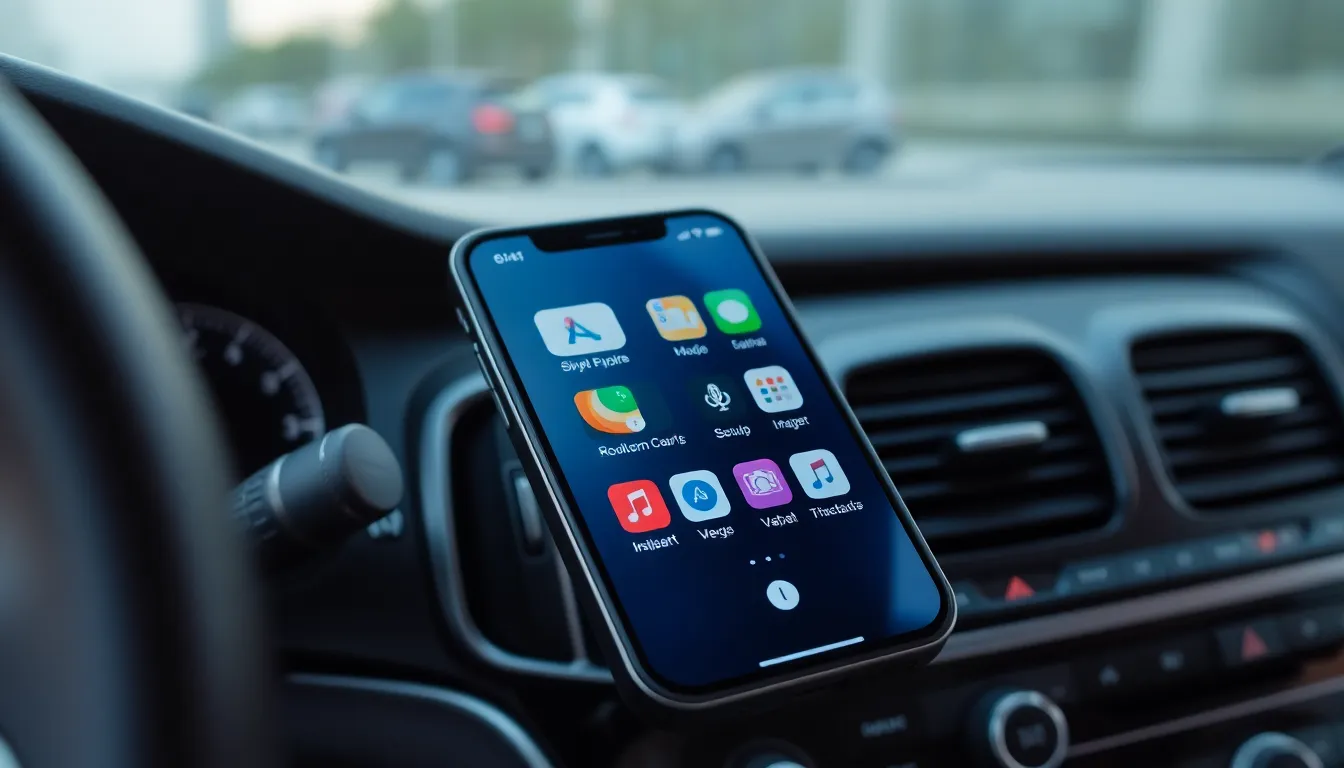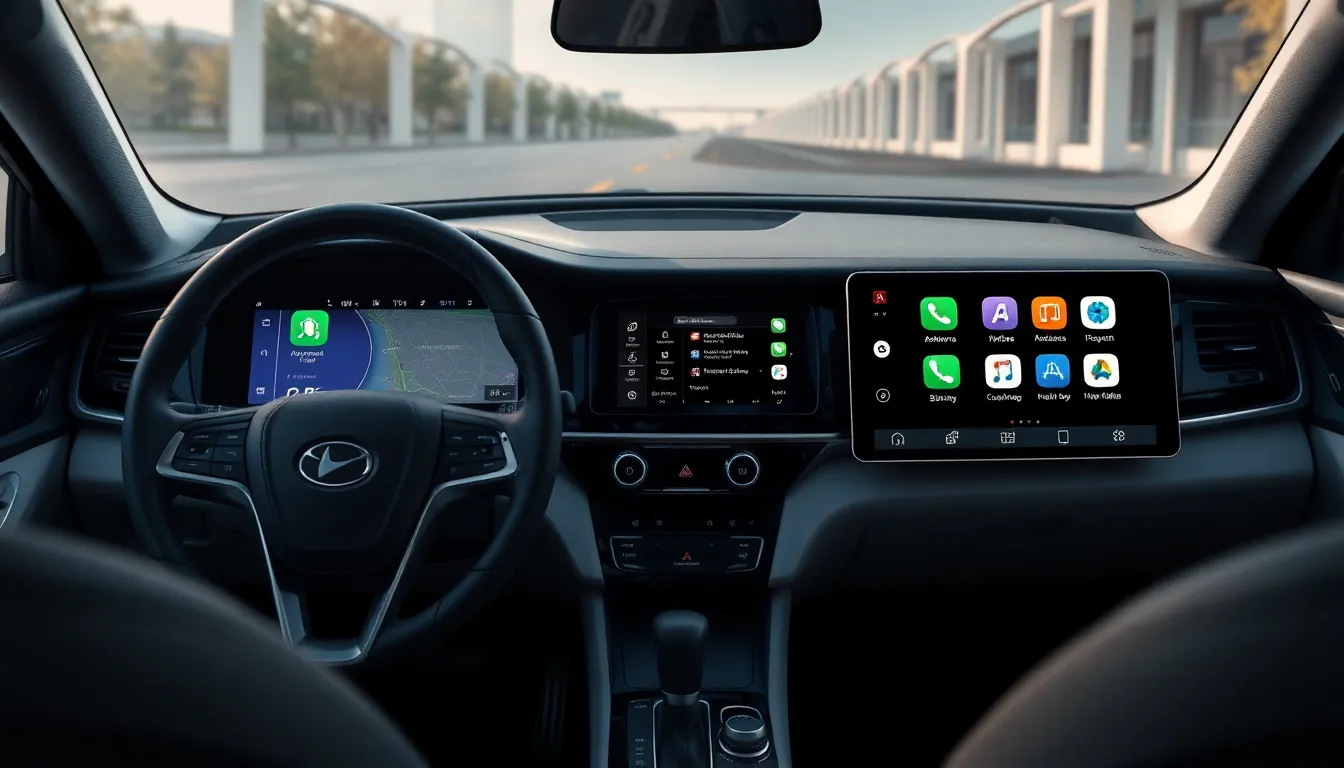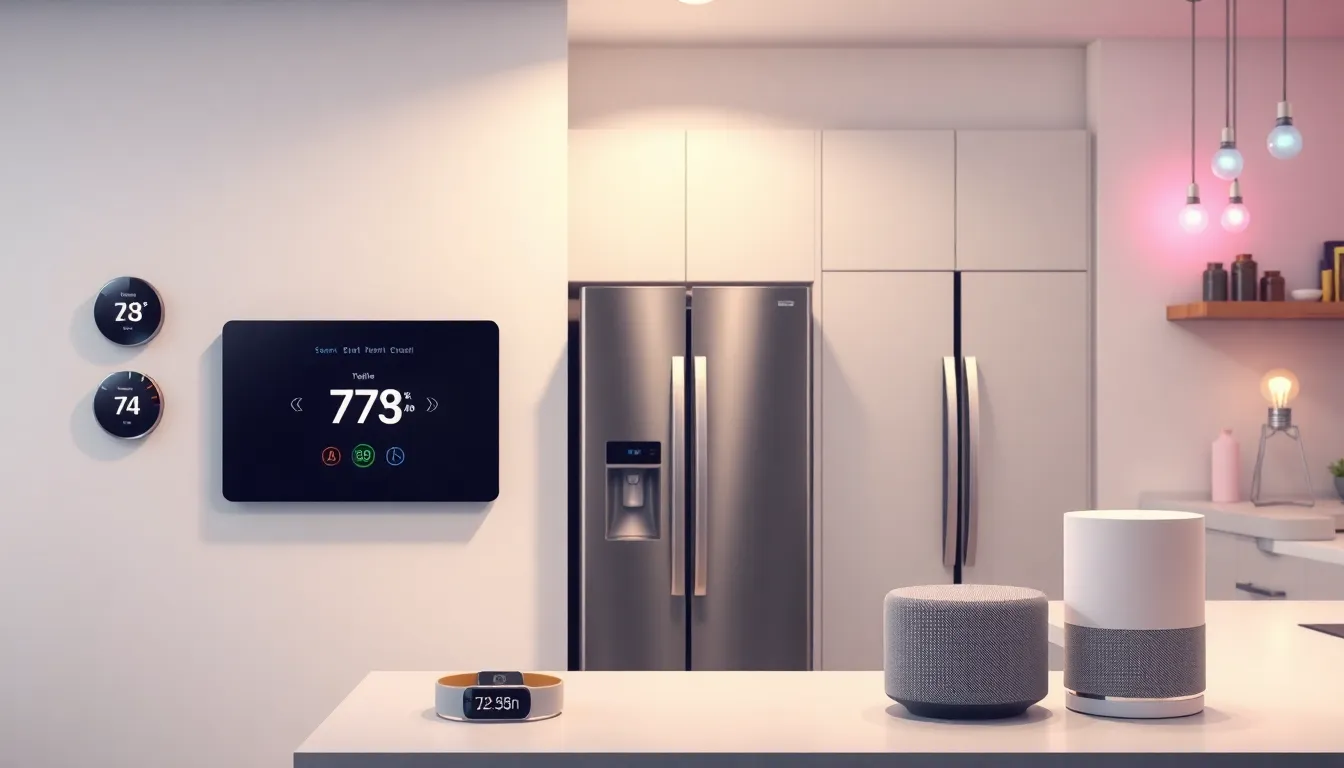Table of Contents
ToggleIn a world where smartphones reign supreme, the battle between Android and iPhone users is as fierce as ever. But what happens when these tech titans collide on the open road? Enter the question that’s got everyone scratching their heads: Does Android Auto actually work with iPhone? Spoiler alert: if you’re hoping for a harmonious union, you might be in for a bumpy ride.
Understanding Android Auto
Android Auto provides drivers with a smarter way to access navigation, communication, and entertainment apps through their vehicle’s display. This platform operates predominantly with Android devices; however, the interaction with iPhones creates a unique compatibility challenge.
Android Auto integrates various apps like Google Maps, Spotify, and WhatsApp to streamline driving experiences. Users connect their Android smartphones via USB to access features seamlessly on their car’s infotainment system. This convenience enhances safety by minimizing distractions.
Compatibility issues arise when considering iPhone integration. Android Auto doesn’t support iOS devices; therefore, driving an iPhone means excluding Android Auto’s functionalities. Apple offers its solution, Apple CarPlay, which serves a similar purpose, allowing iPhone users to harness smartphone features while driving.
Although many modern vehicles come equipped with both Android Auto and Apple CarPlay, the choice of smartphone affects which platform users can access. Drivers seeking streamlined technology should consider their device compatibility prior to relying on vehicle features.
Device selection matters for those who prioritize easy access to navigation and communication while driving. Understanding these system functionalities ensures that users make informed decisions regarding their in-car technology. While Android Auto excels with Google services, it doesn’t cater to the iPhone audience.
Compatibility with iPhone

Android Auto does not work with iPhones, as it primarily supports Android devices. iPhone users can access similar features through Apple CarPlay, designed specifically for iOS users.
Supported Devices
Android Auto functions seamlessly with a variety of Android smartphones. Devices running Android 6.0 (Marshmallow) or later are typically compatible. Manufacturers like Samsung, Google, and LG provide strong support, allowing users to utilize navigation and entertainment features in their vehicles.
Limitations for iPhone Users
Limitations for iPhone users arise since they cannot connect their devices to Android Auto. Using Apple CarPlay becomes imperative for iPhone users wanting an integrated experience. Not being able to access Android Auto means missing out on its extensive features, such as voice commands for Google Assistant. Additionally, iPhone users may find fewer vehicles available with both systems, making compatibility a significant concern when choosing a new car.
Features of Android Auto
Android Auto streamlines in-car technology for users with Android devices. It integrates smartphone features directly into the vehicle’s display, enhancing usability while driving.
User Interface and Experience
The user interface of Android Auto focuses on simplicity and ease of navigation. Bright colors and intuitive icons help drivers access apps quickly. Notifications appear in a visually appealing format, ensuring that users remain informed without distraction. Voice commands through Google Assistant enhance this experience, allowing hands-free operation. Drivers can customize their dashboard with preferred applications, tailoring the interface to their needs. Screen layouts adapt to different vehicle displays, providing optimal visibility and interaction.
Key Functions and Apps
Android Auto supports numerous essential applications serving navigation, messaging, and entertainment. Google Maps stands out as a primary navigation tool, offering real-time traffic updates and directions. Spotify and other music apps allow users to stream their playlists seamlessly. Messaging applications such as WhatsApp ensure users can communicate safely without taking their eyes off the road. Additionally, calendar integrations remind drivers of upcoming appointments. These functions work together to create a cohesive driving experience, prioritizing safety and convenience for Android smartphone users.
Alternatives for iPhone Users
iPhone users can turn to Apple CarPlay for a seamless in-car experience. CarPlay integrates perfectly with iOS devices, allowing users to access apps directly from the vehicle’s display. Popular applications such as Apple Maps, Spotify, and messaging services work well within this environment.
Many new vehicles feature both Apple CarPlay and Android Auto, offering flexibility for drivers. When choosing a car, it’s essential for users to consider the presence of Apple CarPlay to enhance connectivity. CarPlay provides simple navigation using voice commands via Siri, which allows users to interact without taking their hands off the wheel.
Other alternatives exist for those seeking additional app functionality. Bluetooth connections enable basic phone calls and audio playback from iPhones. This method offers a straightforward way to stay connected while driving, even if it’s less integrated than CarPlay.
Maintaining an up-to-date iOS device provides the latest features and security enhancements. Regularly updating the operating system ensures compatibility with new automotive technologies. Users should also research compatible vehicles, as many manufacturers design their infotainment systems with iPhone users in mind.
Exploring aftermarket devices presents more options for iPhone connectivity. Various devices offer features similar to Android Auto, ensuring users stay connected while on the road. These devices frequently come with their apps, allowing drivers to customize their experiences further.
Ultimately, while Android Auto does not support iPhones, several alternatives ensure that iPhone users can enjoy a connected and safe driving experience.
The compatibility landscape between Android Auto and iPhones highlights a clear divide in the smartphone ecosystem. While Android Auto offers a rich set of features for Android users, iPhone users must rely on Apple CarPlay to achieve a similar in-car experience. This distinction is crucial for drivers when selecting a vehicle equipped with these technologies.
Understanding the limitations of Android Auto for iPhone users helps in making informed choices. With many modern vehicles supporting both systems, it’s essential to consider personal preferences and device compatibility. Ultimately, the right choice enhances safety and convenience on the road, ensuring a connected driving experience tailored to individual needs.





